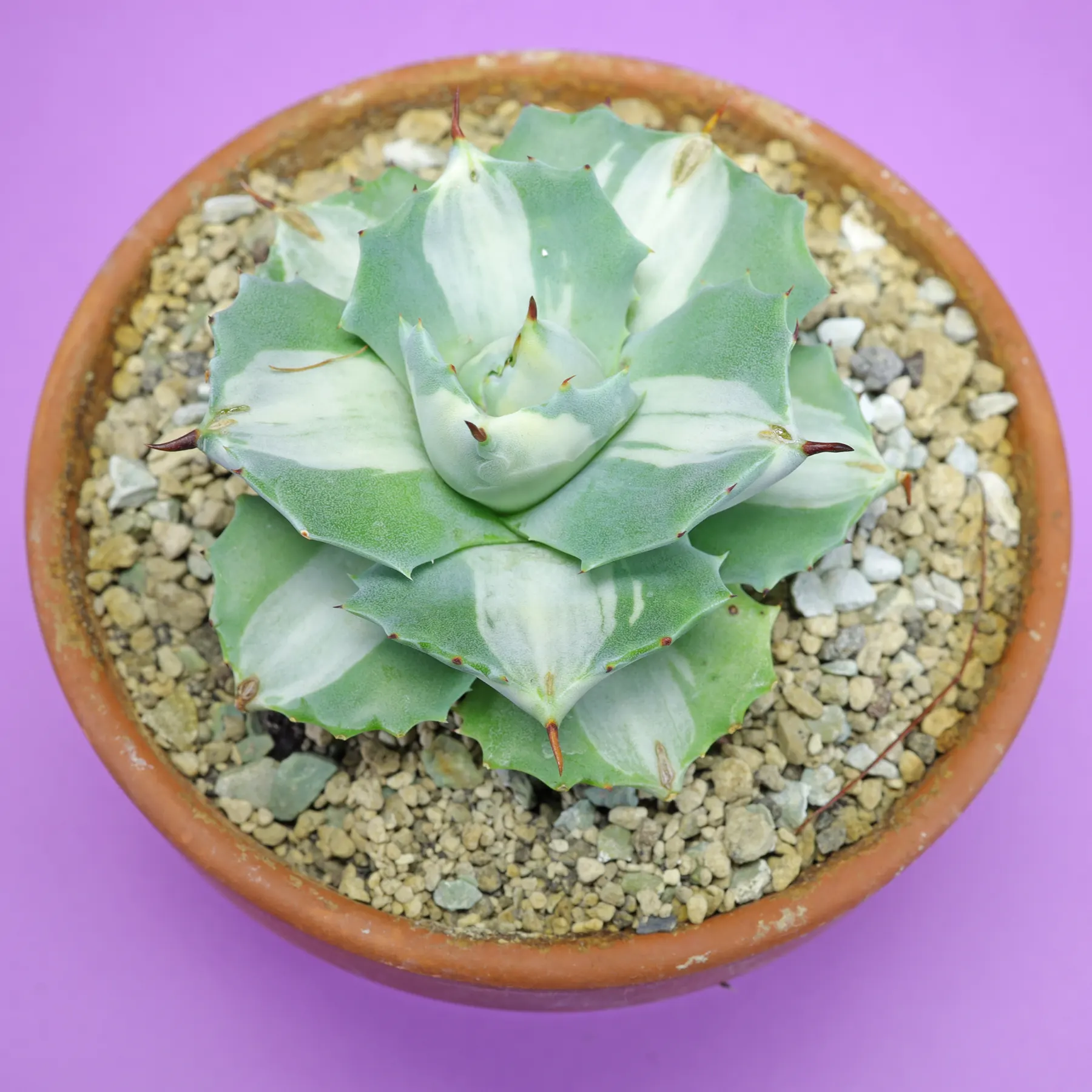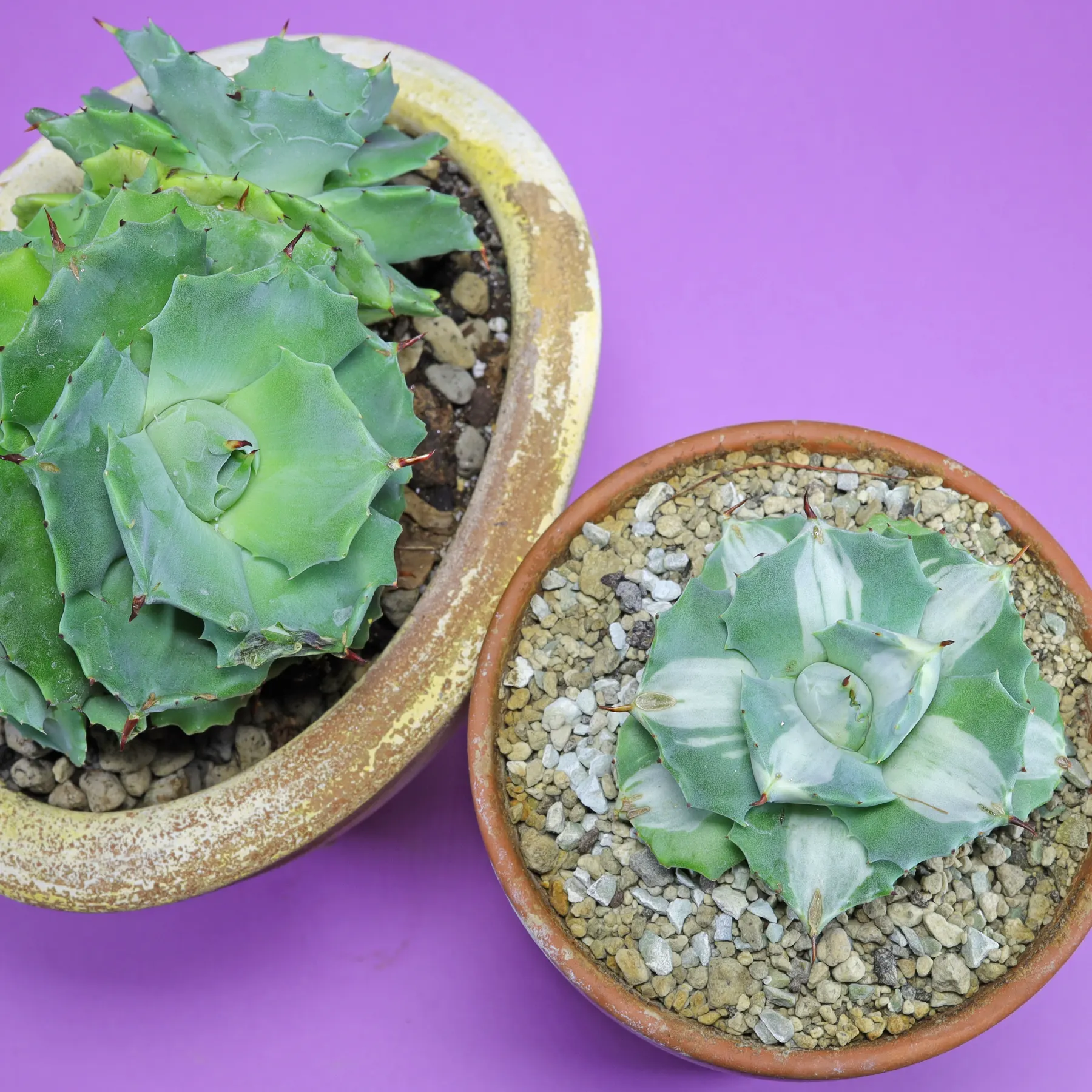Butterfly Agave, Verschaffelt Agave
The rosettes of the Butterfly Agave (Agave potatorum) can grow up to 25 centimeters high and 40 centimeters wide. The flowering stem can reach several meters in height. The rosette dies after the flowers have faded and the seeds are ready to germinate.
However, short, offset runners usually appear before the plant flowers. It also takes several years for Agave potatorum to mature and flower. It will remain smaller in a pot than in a large container.
There are several cultivars that differ in leaf shape, color, and size.

How to care for Agave potatorum
Lighting
The Butterfly Agave grows best where it receives at least 4 hours of sunlight per day. Hot summer sun is welcome. It can be placed in the garden or on a balcony from spring to fall.
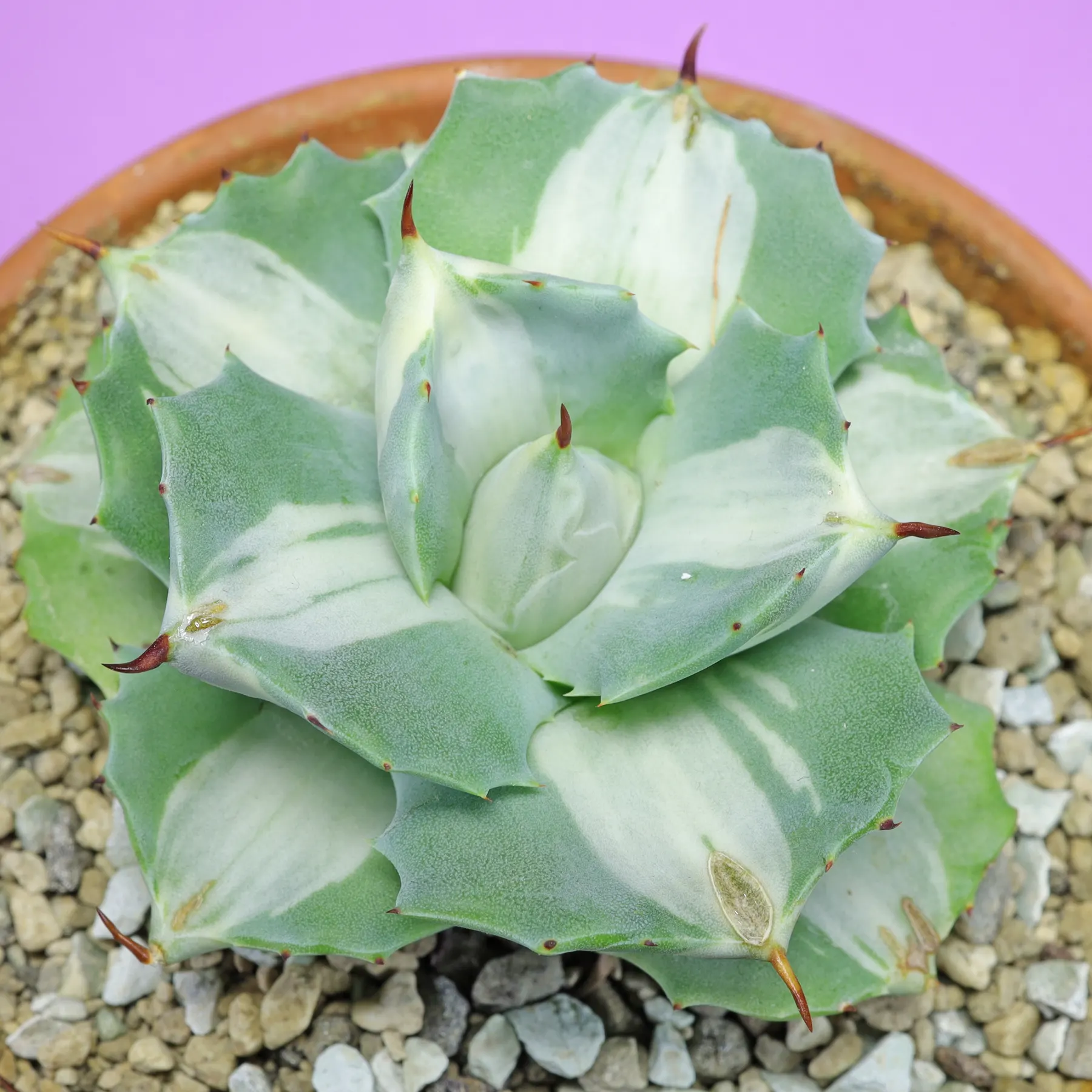
Soil
Standard mixes for cacti or semi-mineral substrates with pumice and lava rock can be used. I use a mix of peat-free herb soil, bird sand, and pumice for the natural form. Agave potatorum “Mediopicta” grows in a substrate that is 80% lava rock.
Tip: For agaves and other succulents that spend the summer in the garden and are exposed to constant rain, semi-mineral to mineral substrates are better. They will not get as wet and the water will drain more quickly.
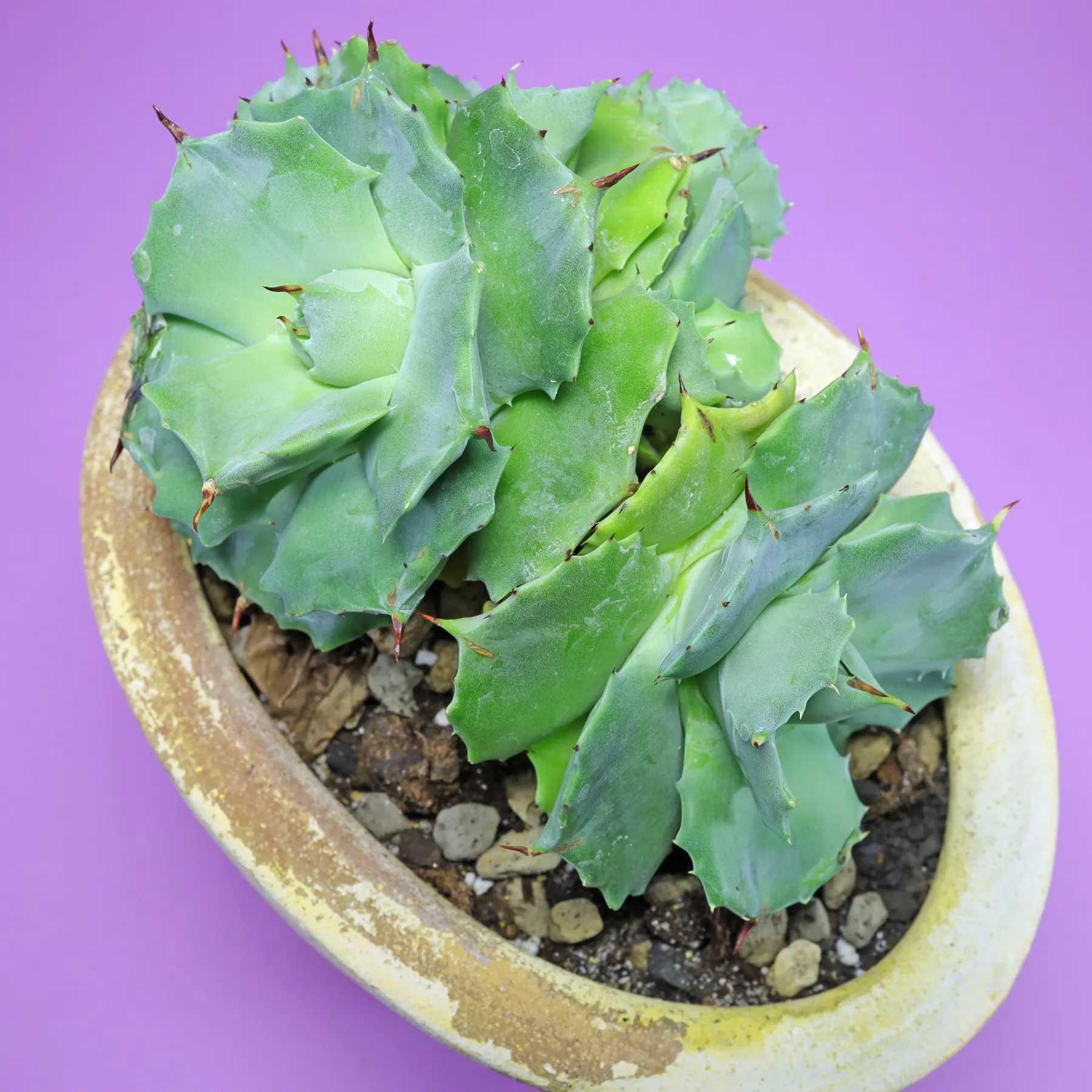
Watering
Allow the soil to dry or nearly dry between waterings. From spring to fall, watering can be thorough. There should be enough water for the substrate to absorb.
In winter, it is sufficient to water sparingly, drop by drop. The cooler the location of Agave potatorum, the less water it needs. However, even in warm locations, it is wise to water sparingly to prevent the agave from continuing to grow and forming long, thin leaves due to lack of light.
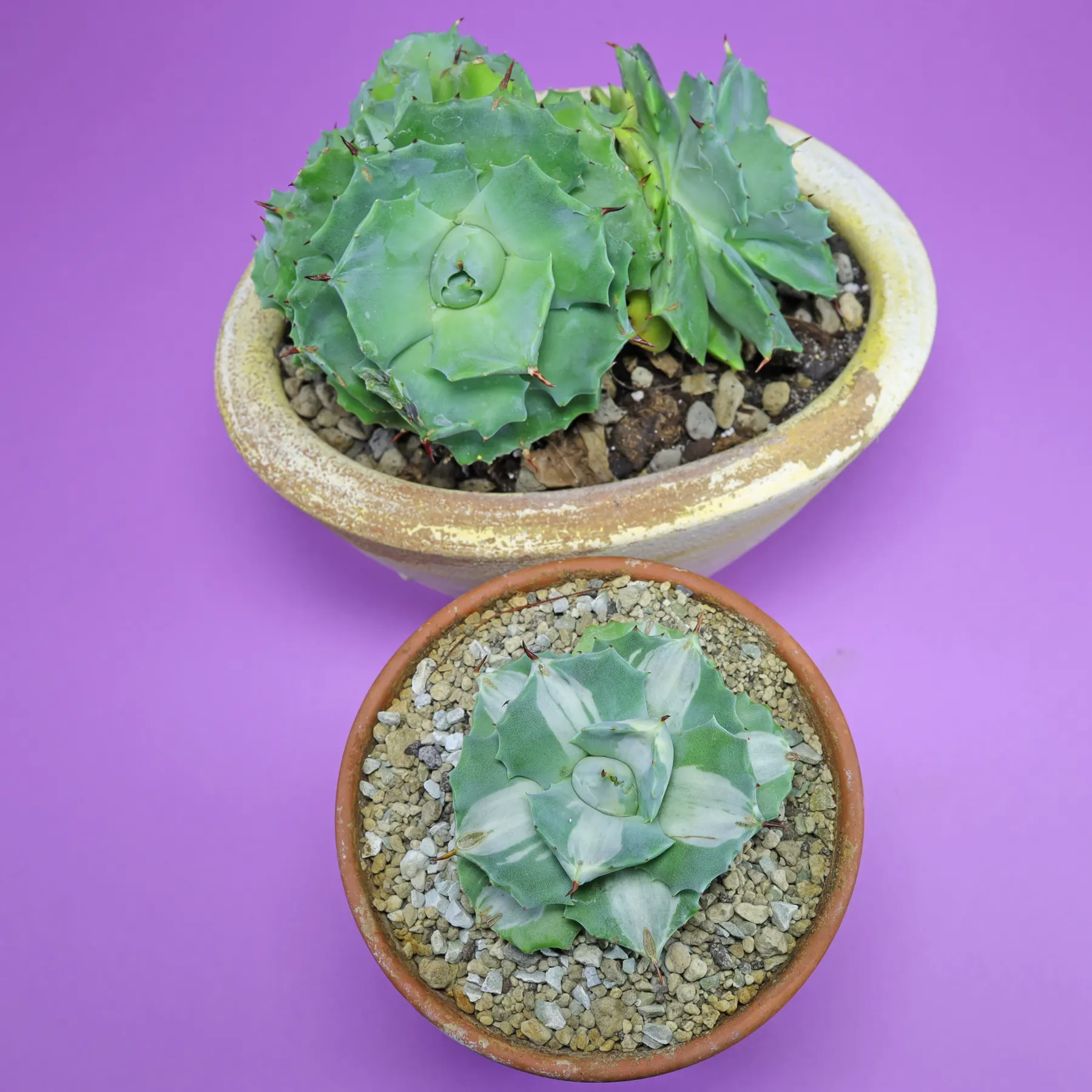
Feeding
Liquid fertilizer can be applied monthly from spring to fall. For the first year after purchase or repotting, the agave does not need to be fed.
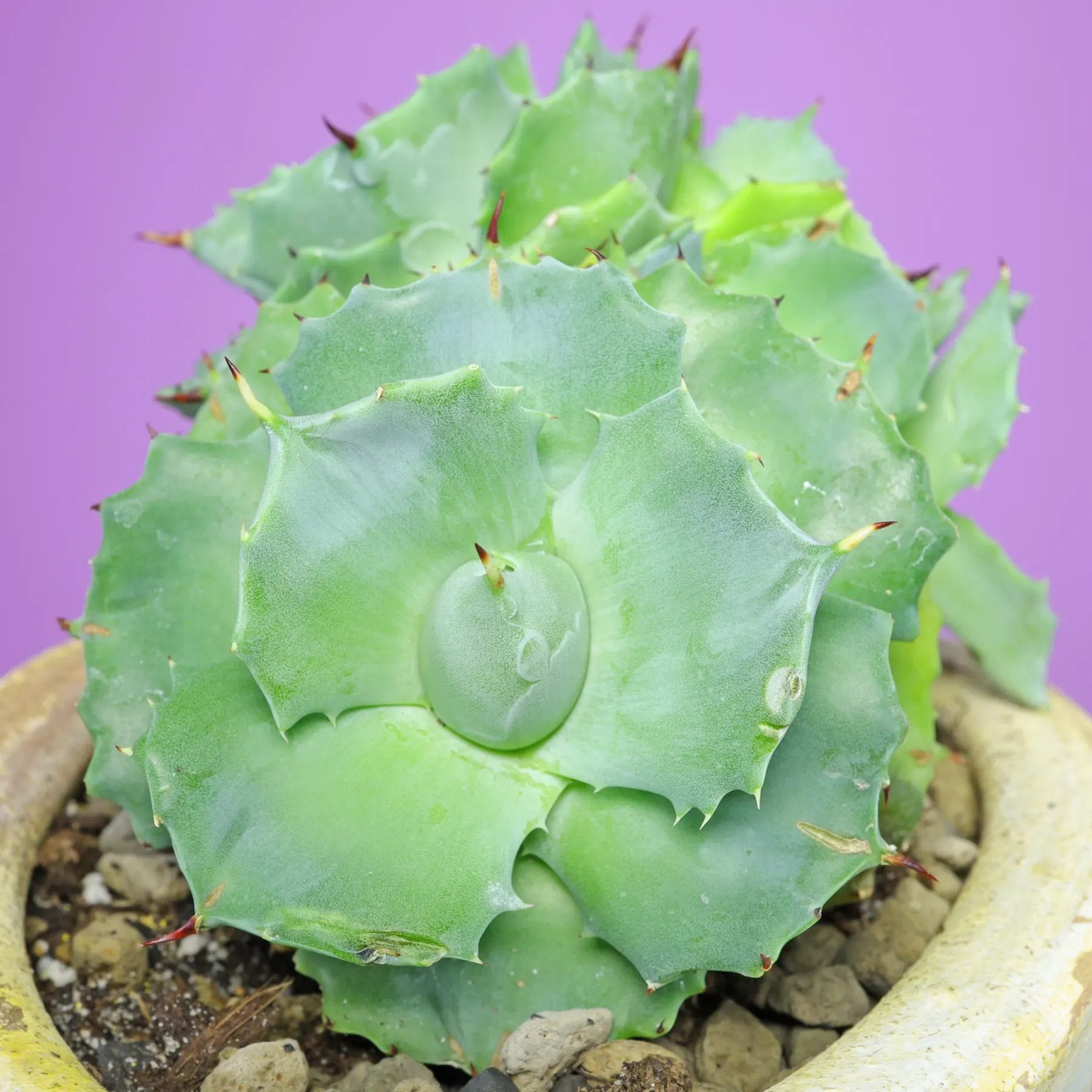
Temperature
Overwintering can occur at temperatures between 50 and 59 °F (10 and 15 °C).
Propagation
Propagation is possible with seeds and offsets.
